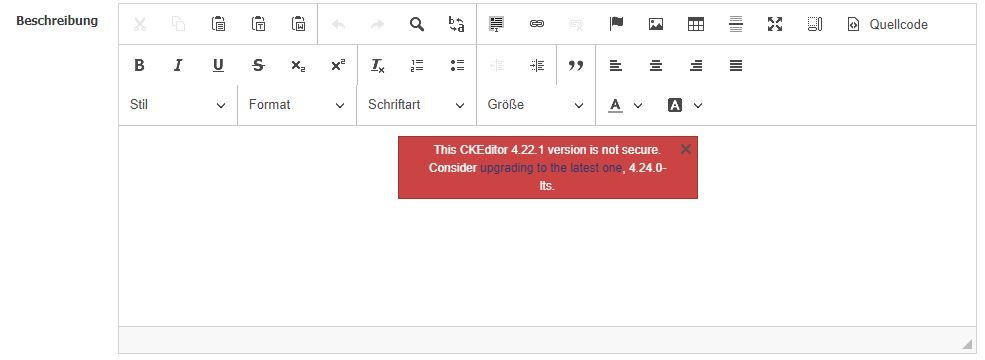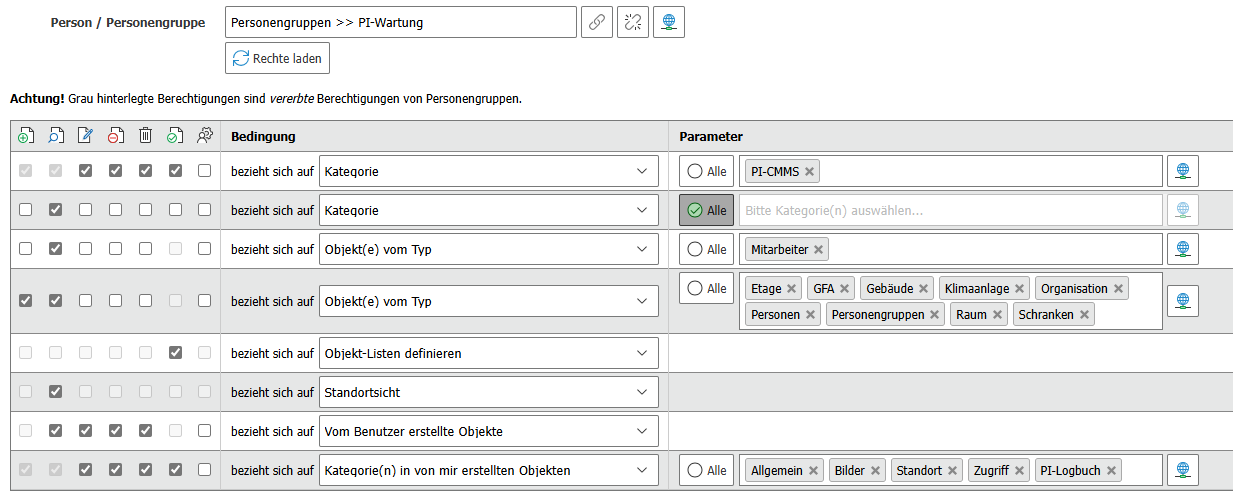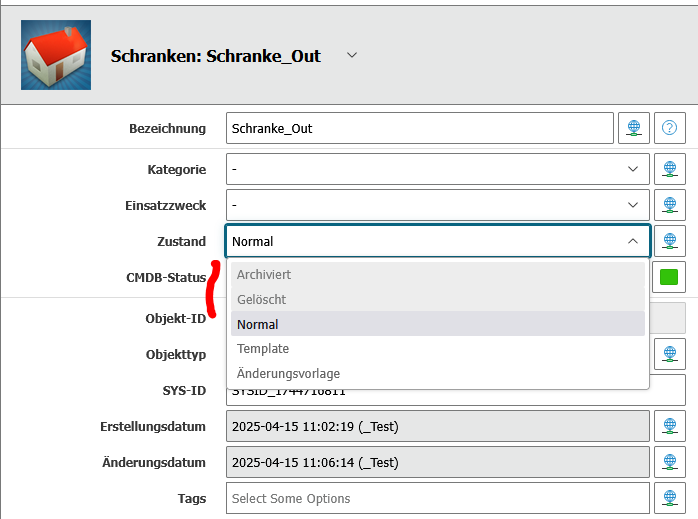Servus,
i-doit V34
ich habe mir gedacht, baue ich doch heute die eMail-Notification so um, dass ein HTML-eMail samt Tabelle generiert wird, anstatt einem Text-Mail mit der ASCII-Tabelle.
Warum? Verschobener Text in Tabelle.
Macht aus dem hier:

das da:

Datei:
/var/www/html/src/classes/notification/isys_notification.class.php
Zeile 1036:
Alt:
$l_mailer->set_content_type(isys_library_mail::C__CONTENT_TYPE__PLAIN);
Neu:
$l_mailer->set_content_type(isys_library_mail::C__CONTENT_TYPE__HTML);
Alt ab Zeile 1151:
/**
* Builds a simple plaintext table with header. Columns are left-aligned.
*
* @param array $p_entities Entities
*
* @return string
*
* @todo This is not the right place. Move it to MVC view or something.
*/
protected function build_plain_table($p_entities)
{
assert(is_array($p_entities));
$l_table = '';
$l_headers = [];
$l_layouted_headers = [];
if (count($p_entities) === 0) {
return $l_table;
}
// Layout:
$l_horizontal_line = '-';
$l_horizontal_line_header = '=';
$l_vertical_line = '|';
$l_edge = '+';
// Analyze entities:
$l_column_widths = [];
$l_count = 0;
// Iterate through each entity:
foreach ($p_entities as $l_entity) {
// Also analyze header:
if ($l_count === 0) {
$l_count++;
$l_headers = array_keys($l_entity);
foreach ($l_headers as $l_header) {
$l_layouted_headers[$l_header] = $this->emphasize(self::_l($l_header));
}
foreach ($l_headers as $l_header) {
$l_column_widths[$l_header] = strlen($l_layouted_headers[$l_header]);
}
}
// Analyse values:
foreach ($l_entity as $l_key => $l_value) {
$l_value_length = strlen($l_value);
if ($l_value_length > $l_column_widths[$l_key]) {
$l_column_widths[$l_key] = $l_value_length;
}
}
}
$l_horizonatal_header_line_parts = [];
$l_horizonatal_line_parts = [];
foreach ($l_column_widths as $l_column_width) {
$l_horizonatal_header_line_parts[] = $l_horizontal_line_header . str_pad('', $l_column_width, $l_horizontal_line_header) . $l_horizontal_line_header;
$l_horizonatal_line_parts[] = $l_horizontal_line . str_pad('', $l_column_width, $l_horizontal_line) . $l_horizontal_line;
}
$l_complete_horizontal_header_line = $l_edge . implode($l_edge, $l_horizonatal_header_line_parts) . $l_edge;
$l_complete_horizontal_line = $l_edge . implode($l_edge, $l_horizonatal_line_parts) . $l_edge;
// Prepend header:
$l_padded_headers = array_map([
$this,
'table_header'
], $l_layouted_headers, $l_column_widths);
$l_table .= $l_complete_horizontal_header_line . "\n" . $l_vertical_line . ' ' . implode(' ' . $l_vertical_line . ' ', $l_padded_headers) . ' ' . $l_vertical_line .
"\n" . $l_complete_horizontal_header_line . "\n";
// Iterate through each entity:
foreach ($p_entities as $l_entity) {
$l_table .= $l_vertical_line;
foreach ($l_entity as $l_key => $l_value) {
$l_table .= ' ' . str_pad($l_value, $l_column_widths[$l_key]) . ' ' . $l_vertical_line;
}
$l_table .= "\n" . $l_complete_horizontal_line . "\n";
}
$l_table = "<pre style='font-family: Courier, monospace;'>" . htmlentities($l_table) . "</pre>";
return $l_table;
}
Neu ab Zeile 1151:
/**
* Builds a simple plaintext table with header. Columns are left-aligned.
*
* @param array $p_entities Entities
*
* @return string
*
* @todo This is not the right place. Move it to MVC view or something.
*/
protected function build_plain_table($p_entities)
{
assert(is_array($p_entities));
if (count($p_entities) === 0) {
return '';
}
// Tabellen-Header bestimmen:
$l_headers = array_keys($p_entities[0]);
// Tabelle als HTML aufbauen:
$l_table = '<table style="border-collapse: collapse; font-family: Courier, monospace; width: 100%;">';
// Tabellenkopf:
$l_table .= '<tr>';
foreach ($l_headers as $l_header) {
$l_table .= '<th style="border: 1px solid black; padding: 5px; text-align: left; background-color: #f0f0f0;">'
. htmlentities(self::_l($l_header))
. '</th>';
}
$l_table .= '</tr>';
// Tabellenzeilen:
foreach ($p_entities as $l_entity) {
$l_table .= '<tr>';
foreach ($l_entity as $l_value) {
$l_table .= '<td style="border: 1px solid black; padding: 5px; white-space: nowrap;">'
. htmlentities($l_value)
. '</td>';
}
$l_table .= '</tr>';
}
$l_table .= '</table>';
return $l_table;
}
Vielleicht kann man das gleich in eine nächste Version einbauen?
PLAIN oder HTML ... wenn das wichtig ist zu entscheiden, dann wäre dies über die Verwaltung / Einstellungen interessant ... frage mich nur wofür?
LG Stefan








